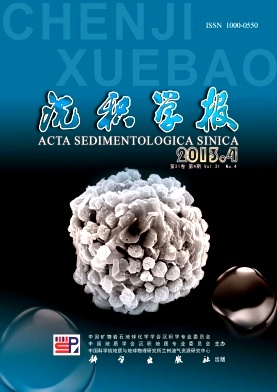Exploration Potential and Geological Conditions of Tight Oil in the Qaidam Basin
- Publish Date: 2013-08-10
-
Key words:
- favorable exploration areas /
- exploration potential /
- geological characteristics /
- tight oil /
- Qaidam basin
Abstract: There are geological conditions for the formation of tight oil in the Qaidam basin. The Middle and Lower Jurrasic semi-deep lacustrine facies mudstone and the Tertiary semi-deep lake facies to deep lake facies mudstone are widely distributed in the Qaidam basin, which constitutes a favorable relationship of source and reservoir coexistence for the formation of tight oil with bank to shallow lake facies sand body or carbonate rock which is interbeded with or situated near the source rocks. The Jurassic source rocks in the northern margin of the Qaidam basin have an average organic carbon value of 1.85, Ⅰ-Ⅱ2organic types and a maturity range from mature stage to over mature stage with better oil generation potential. The Tertiary source rocks in the west of the Qaidam basin have a range of organic carbon from 0.4%to 1.2%Ⅰ-Ⅱ1 organic types and a Ro value from 0.4% to 1.2% within an oil generation window. Compared to other Chinese basins, the degree of hydrocarbon inversion of the Tertiary source rocks is high. The clastic reservoir space is dominated by remained intergranular pores and corroded pores with porosity from 3.8% to 10.2% and permeability from 0.1×103 μm2 to 2×103 μm2. The reservoir rocks have characteristics of thinner single beds, vertical multilayer’s superimposition, thicker accumulated thickness and many horizontal oil beds overlayed. The reservoir space of the carbonate rock is predominated by corroded pores and interbeded contracted cracks with porosity from 5% to 7% and permeability from 0.2×103 μm2 to 0.7 ×103 μm2. The reservoir rock is characterized by more single beds, thinner single beds, more sedimentary facies controlled and horizontal widely continuous oil beds. The groups of oil reservoir formation include four types, that is, inner source included group, upper source widely distributed model, lower source layered group, and beside source covered group, which are mainly controlled by source depressions. The tight oil in the Qaidam basin is enriched and has a great potential, being estimated the resource yield ranges from 8.16 to 10.46×108 Tons. After the analysis of reservoir forming conditions, we think that four favorable exploration areas, i.e., Zhahaquan-Wunan, Xiaoliangshan-Nanyishan and Qigequan-Yaojin in the western Qaidam basin and Lenghu in the northern Qaidam basin, can be served as current exploration targets.
| Citation: | Exploration Potential and Geological Conditions of Tight Oil in the Qaidam Basin[J]. Acta Sedimentologica Sinica, 2013, 31(04): 672-682. |






 DownLoad:
DownLoad: